Casper enjoys a low-key jam on the Buchla modular synthesizer. From sende_pause on Instagram.
That yawn toward the end is priceless 😸

Casper enjoys a low-key jam on the Buchla modular synthesizer. From sende_pause on Instagram.
That yawn toward the end is priceless 😸
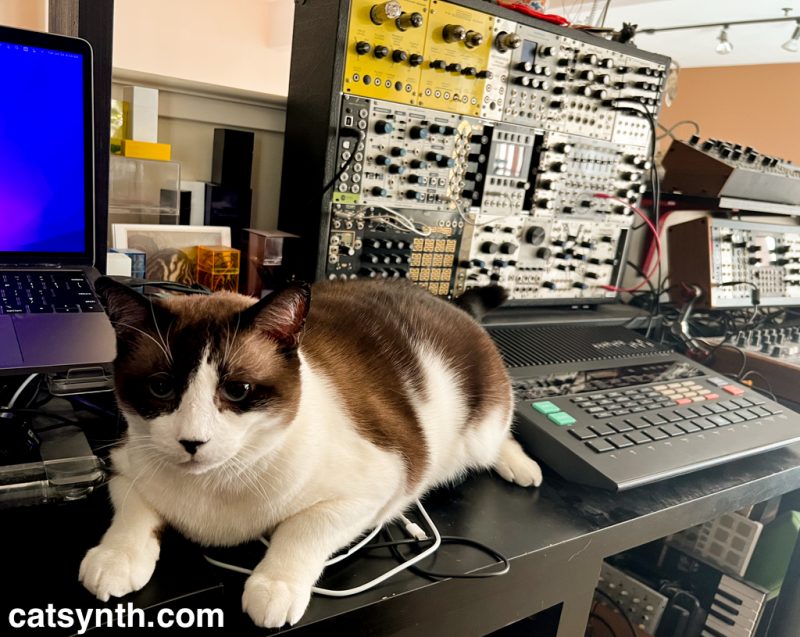
Today we have CatSynth pics with our very own Big Merp, who loves to jump up on the desk. Here we see him with our Yamaha RX5 drum machine and our massive modular system. The Metasonix modules are easy to spot, as are the Make Noise modules. We also have MOTM, Rossum Electro-music, Sputnik modular, 4MS, Malekko, Folktek, Mordax, and more as we get into the second grouping in the distance. We also see a bit of the Arturia MiniBrute 2 and Moog Mother-32. A fuller accounting can be found in the tags.
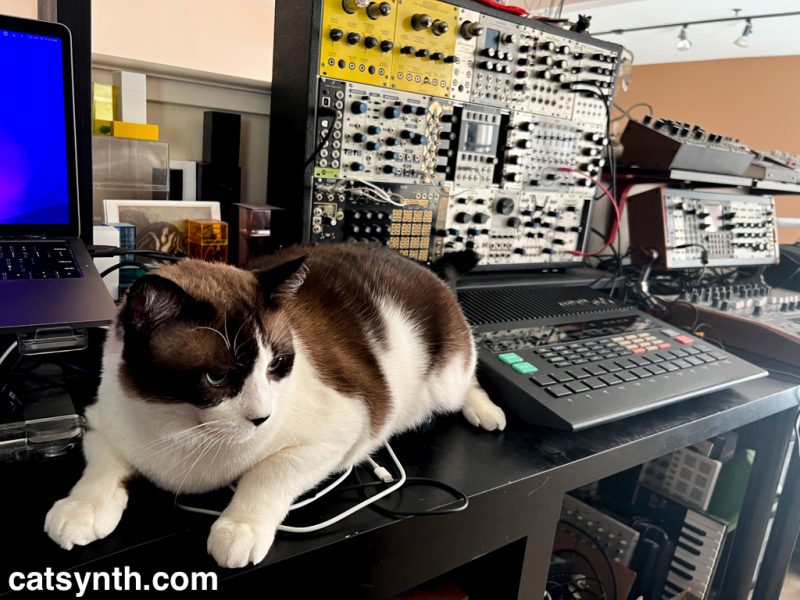
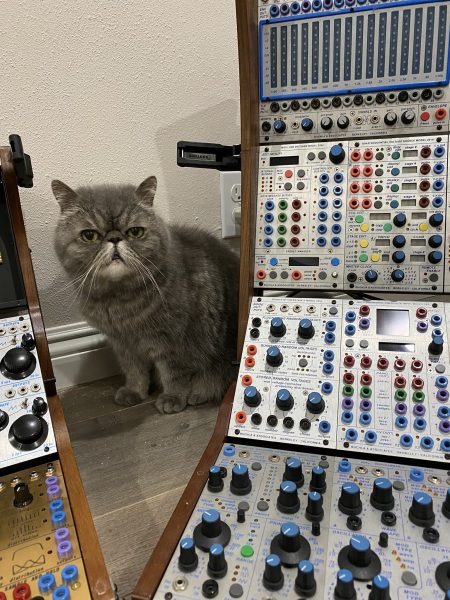
The lovely Lilith joins us today with an impressive array of Buchla 200-series modules.
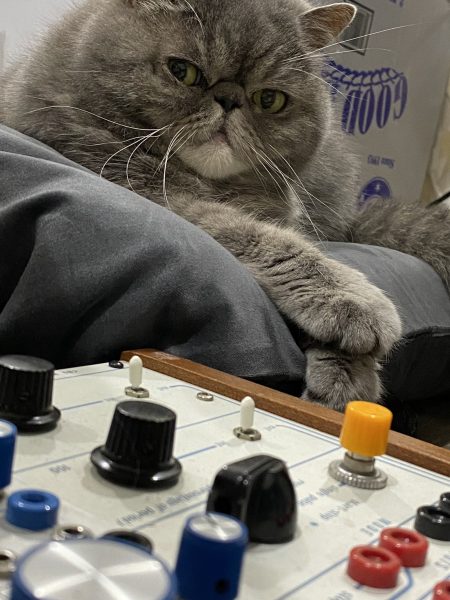
From horse_eunuchs (@MareNextDoor) on Twitter.
she’s learning tha synthasyzer
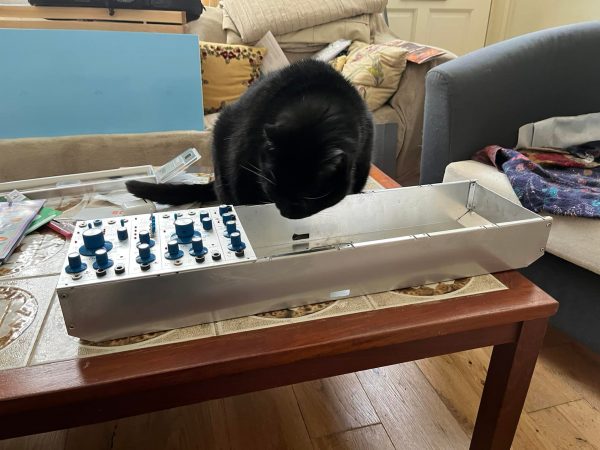
Milo inspects the case for an emerging Buchla modular system. From Keith Winstanley.
Milo has appeared several times on CatSynth – you can see all his appearances via this tag. Although he is a tuxedo cat, from this angle he looks entirely black. Either way, we know he and his human are going to have a lot of fun with this new modular system.
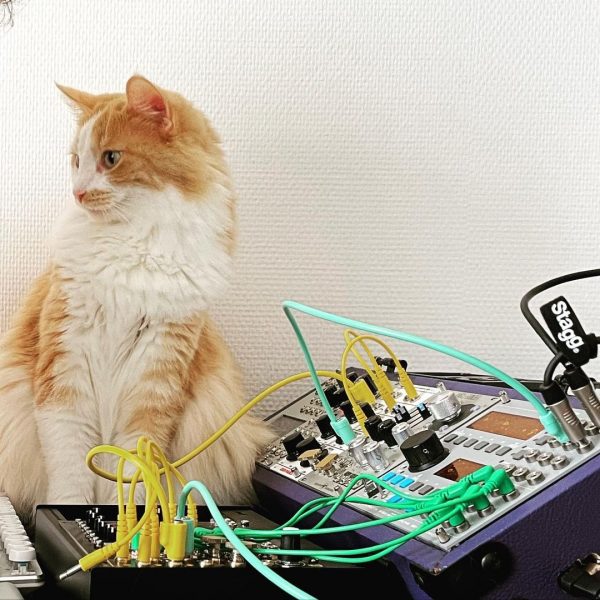
Hürmüz poses with a modular system that includes a Ruchla Red Panel oscillator (a favorite of ours), a Schlappi Engineering Angle Grinder, Orthogonal Devices ER-301, and a lot more. From Cengiz Arslanpay (@carslanpie) via Instagram.
“I am the best Oscillator”
https://www.instagram.com/p/CVGRFhPoATC/
We at CatSynth agree that cats make excellent oscillators.
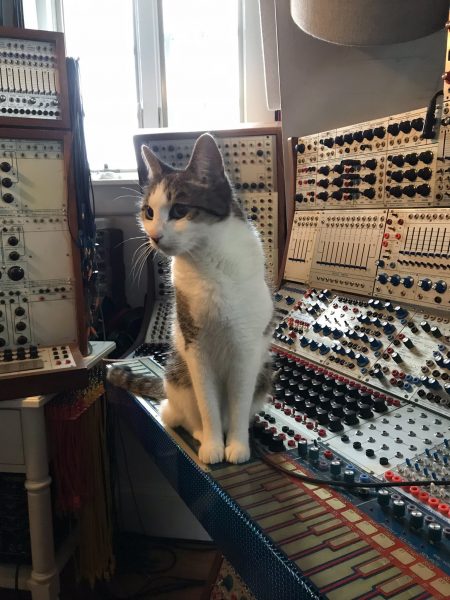
The subject line says it all! Cat with a very impressive Buchla modular system, including the multiple-touch controlled voltage source. From Reed Hays via Twitter.
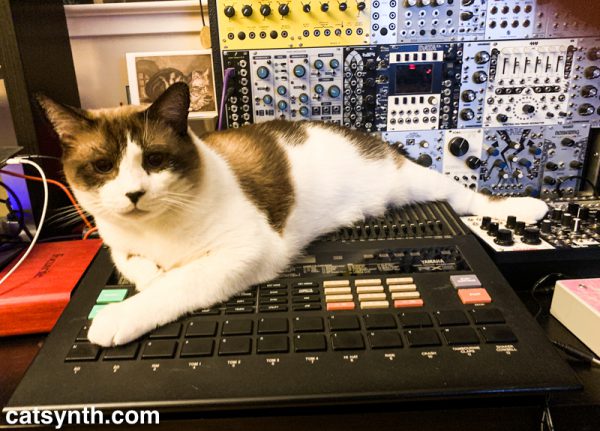
Big Merp has taken to our recently acquired Yamaha RX5 drum machine. I think he will be ready to lay down some rhythm tracks soon. He also has his rear paw on another recent acquisition: the Buchla Red Panel 158 oscillator. Look for these two instruments featured in upcoming episodes of CatSynth TV!
Back in the late 1980s when I was getting into synthesizers, Yamaha’s DX series dominated the landscape (along with Roland’s D series). I got Yamaha’s “After Touch” magazine which featured new releases including the RX5, which became the flagship of their drum-machine line. It was beyond my reach then, but I now I have one and looking forward to seeing what I can do with it in our eclectic studio at CatSynth HQ.
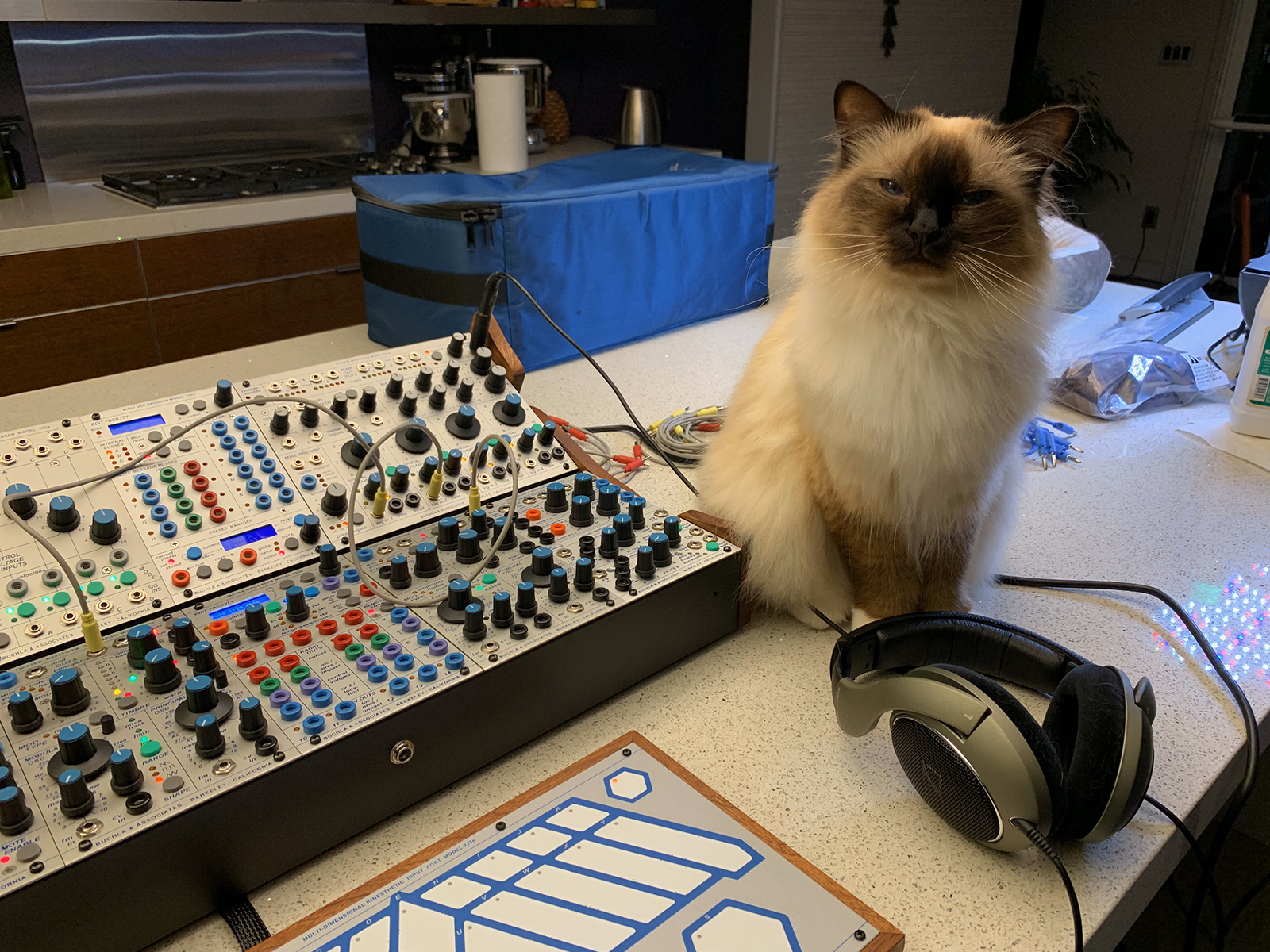
Today we have a rather handsome cat next to a rather handsome Buchla Skylab system. It includes the “Thunder”-style controller and a 227e module as a customization. Overall a very impressive modular synth.
From user @ddp on Twitter. And it was quite an interesting turn of events to discover one another. It was through our cat-blogging friend Sue Strong who longtime readers might remember from the old Carnival of the Cats and Weekend Cat Blogging days. Good times!